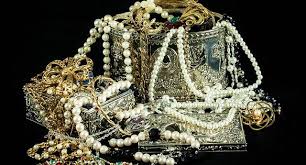Dear Reader
The concept of "teenager" as a distinct life stage emerged in the mid-20th century, particularly in the United States due to a confluence of social, economic, and educational factors. Before this period young people were often viewed as either children or young adults, with less emphasis on a separate teenager identity.
In many pre-industrial societies young people transitioned to adulthood relatively early often entering the workforce or getting married in their mid-teens. Childhood and adulthood were seen as more distinct with less of a recognised intermediate stage.
The early 20th century saw the rise of compulsory education and the extension of schooling for long periods. This kept young people in school longer, delaying their entry into the workforce and creating a distinct period of adolescence.
The concept of the teenager particularly in the US, has had a global impact, influencing youth culture and the perception of adolescence in many other countries.
*
From William Cowper June 25th 1785 Buckinghamshire
'I write in a nook that I call my Boudoir. It is a summer house not much bigger than a sedan chiar, the door of which opens into the garden, that is now crowded with pinks, roses, and honeysuckles, and the window into my neighbour's orchard.....Having lined it with garden mats, and furnished it with a table and two chairs, here I write all that I write in summer-time, whether to my friends or to the public.'
From Samuel Pepys June 28th 1664 in London
'Put on half a shirt this summer, it being very hot, and yet so ill-tempered am I grown, that I am afraid I shall catch cold, while all the world is ready to melt away.'
*
Rooks
I was fourteen,
when I first heard
the call of the rooks
caw-cawing
their eerie cries.
From a Cornish cottage garden
I walked down through
dark woods to the beach,
a remote place,
just dunes, sand, the sea
and me, a confused, angry teenager,
with the rooks caw-cawing in my ears
disturbing my thoughts.
Even now, in later years,
whenever I hear whispers from the wind,
or sea lapping over large grey stones
ever forward, ever backward,
glimpse a faraway horizon
and see twilight descending
darkening the sky,
the rooks in large black groups
flying high towards
their evening bed,
cawing, cawing, cawing,
my heart misses a beat
and an unexplained sadness
overcomes me.
*
My new collection of poetry is now published under the title : Betrayal. You can get a copy from Amazon. Just put in: Patricia Huth Ellis and click .....
*
With very best wishes, Patricia
PS Many thanks to all Brazilian people who got in touch this week. Much appreciated.




















